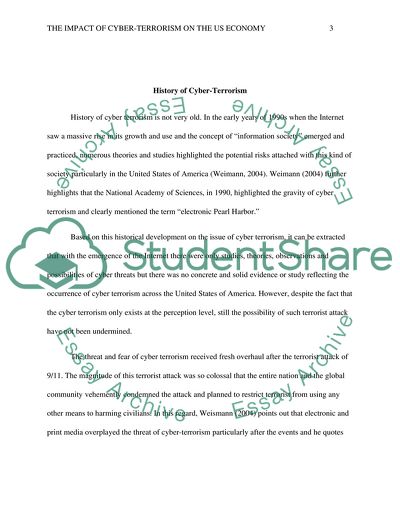Cite this document
(History of Cyber-Terrorism Research Paper Example | Topics and Well Written Essays - 2500 words, n.d.)
History of Cyber-Terrorism Research Paper Example | Topics and Well Written Essays - 2500 words. Retrieved from https://studentshare.org/history/1832455-the-impact-of-cyberterrorism-on-the-us-economy
History of Cyber-Terrorism Research Paper Example | Topics and Well Written Essays - 2500 words. Retrieved from https://studentshare.org/history/1832455-the-impact-of-cyberterrorism-on-the-us-economy
(History of Cyber-Terrorism Research Paper Example | Topics and Well Written Essays - 2500 Words)
History of Cyber-Terrorism Research Paper Example | Topics and Well Written Essays - 2500 Words. https://studentshare.org/history/1832455-the-impact-of-cyberterrorism-on-the-us-economy.
History of Cyber-Terrorism Research Paper Example | Topics and Well Written Essays - 2500 Words. https://studentshare.org/history/1832455-the-impact-of-cyberterrorism-on-the-us-economy.
“History of Cyber-Terrorism Research Paper Example | Topics and Well Written Essays - 2500 Words”, n.d. https://studentshare.org/history/1832455-the-impact-of-cyberterrorism-on-the-us-economy.


